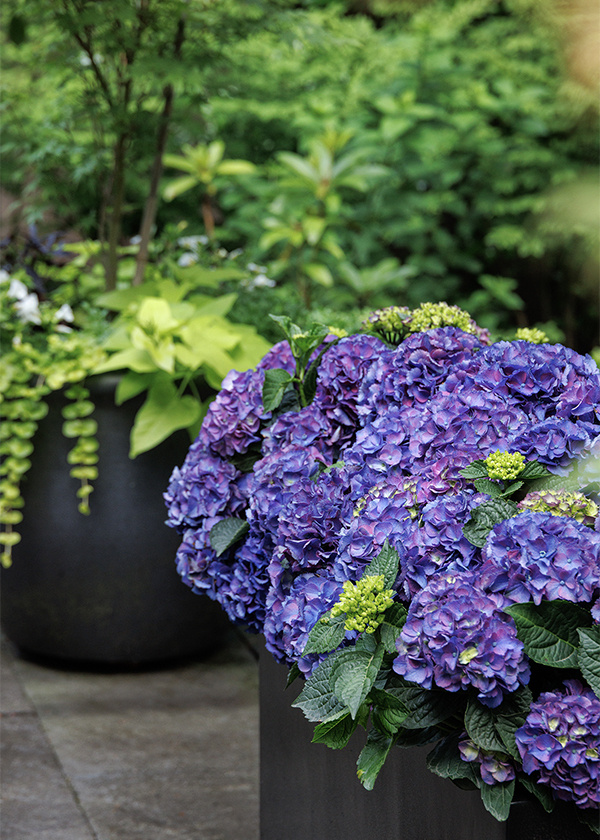Golden Crane Hydrangea: The Showstopper Shrub Of The Summer
Golden Crane Hydrangea: The Showstopper Shrub of the Summer
If you're looking for a shrub that will add a touch of elegance and drama to your garden, look no further than the golden crane hydrangea. This stunning plant is known for its large, cone-shaped flowers that can grow up to 12 inches long. The flowers start out a bright green in the spring, then gradually turn to a golden yellow as they mature. In the fall, they turn a deep red or maroon.
Golden crane hydrangeas are relatively easy to care for and can thrive in a variety of conditions. They prefer full sun to partial shade and well-drained soil. They are also drought tolerant once established.
To plant a golden crane hydrangea, dig a hole that is twice the width of the root ball. Backfill the hole with soil, being careful not to bury the crown of the plant. Water the plant well after planting.
Golden crane hydrangeas should be fertilized once a year in the spring. Use a balanced fertilizer, such as 10-10-10.
To deadhead the plant, simply remove the spent flower clusters. This will encourage new growth and more flowers.
Golden crane hydrangeas are relatively pest- and disease-free. However, they can be susceptible to powdery mildew. If you see powdery mildew on your plant, you can treat it with a fungicide.
With proper care, golden crane hydrangeas can live for many years and provide you with years of enjoyment.
Here are some additional insights and updates about golden crane hydrangeas:
- They are native to Japan and China.
- The scientific name for golden crane hydrangea is Hydrangea paniculata 'Golden Crane'.
- They are hardy in zones 5-9.
- They can grow up to 8 feet tall and wide.
- The flowers are edible and can be used in salads or desserts.
- They are a popular choice for cut flowers.
If you're looking for a stunning shrub that will add a touch of elegance and drama to your garden, the golden crane hydrangea is a great option. With its easy care and long lifespan, this plant is sure to provide you with years of enjoyment.
The golden crane hydrangea (Hydrangea angustipetala 'MonLongShou') is a beautiful and fragrant shrub that is native to China. It is known for its delicate white lacecap flowers that bloom in late spring and early summer. The flowers have a sweet, jasmine-like scent that can be enjoyed from a distance. The golden crane hydrangea is a relatively small shrub, growing to only 2-3 feet tall and wide. It is hardy in USDA zones 6-10, and prefers moist, well-drained soil and partial shade.
If you are looking for a beautiful and fragrant shrub for your garden, the golden crane hydrangea is a great option. It is easy to care for and will add a touch of elegance to any landscape. For more information about this amazing plant, please visit .
FAQ of golden crane hydrangea
- What is Golden Crane Hydrangea?
Golden Crane Hydrangea is a deciduous shrub that is native to Japan. It is known for its large, showy flowers that bloom in shades of yellow, green, and pink. The flowers are borne on panicles that can reach up to 12 inches in length. Golden Crane Hydrangea is a relatively easy plant to care for and is hardy in USDA zones 5-9.
- Where does Golden Crane Hydrangea grow best?
Golden Crane Hydrangea prefers full sun to partial shade and moist, well-drained soil. It is tolerant of a wide range of soil pH levels, but prefers slightly acidic soil. Golden Crane Hydrangea is a relatively drought-tolerant plant, but it will benefit from regular watering during the summer months.
- How to care for Golden Crane Hydrangea?
Golden Crane Hydrangea is a relatively low-maintenance plant. The most important thing to do is to water it regularly, especially during the summer months. You should also fertilize it once a year in the spring with a balanced fertilizer. In the fall, you can prune Golden Crane Hydrangea to shape it or to remove any dead or damaged branches.
- What are the common pests and diseases of Golden Crane Hydrangea?
The most common pests that attack Golden Crane Hydrangea are aphids, scale insects, and spider mites. These pests can be controlled with insecticidal soap or neem oil. The most common diseases that affect Golden Crane Hydrangea are leaf spot, powdery mildew, and rust. These diseases can be prevented by watering the plant at the base and by providing good air circulation.
- How to propagate Golden Crane Hydrangea?
Golden Crane Hydrangea can be propagated by softwood cuttings in the spring or by division in the fall. To propagate by softwood cuttings, take 4-6 inch long cuttings from the tips of new growth. Remove the bottom leaves and dip the cuttings in rooting hormone. Plant the cuttings in a well-draining potting mix and keep the soil moist. The cuttings should root in about 4-6 weeks. To propagate by division, dig up a mature Golden Crane Hydrangea plant and divide it into two or three sections. Each section should have at least a few roots and some leaves. Plant the divisions in a prepared bed and water well.
Image of golden crane hydrangea
5 different images of Golden Crane Hydrangea from Pinterest:





Post a Comment for "Golden Crane Hydrangea: The Showstopper Shrub Of The Summer"